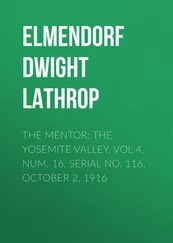Anne Blunt - A Pilgrimage to Nejd, the Cradle of the Arab Race. Vol. 1 [of 2]
Здесь есть возможность читать онлайн «Anne Blunt - A Pilgrimage to Nejd, the Cradle of the Arab Race. Vol. 1 [of 2]» — ознакомительный отрывок электронной книги совершенно бесплатно, а после прочтения отрывка купить полную версию. В некоторых случаях можно слушать аудио, скачать через торрент в формате fb2 и присутствует краткое содержание. Жанр: foreign_antique, foreign_prose, Путешествия и география, на английском языке. Описание произведения, (предисловие) а так же отзывы посетителей доступны на портале библиотеки ЛибКат.
- Название:A Pilgrimage to Nejd, the Cradle of the Arab Race. Vol. 1 [of 2]
- Автор:
- Жанр:
- Год:неизвестен
- ISBN:нет данных
- Рейтинг книги:4 / 5. Голосов: 1
-
Избранное:Добавить в избранное
- Отзывы:
-
Ваша оценка:
- 80
- 1
- 2
- 3
- 4
- 5
A Pilgrimage to Nejd, the Cradle of the Arab Race. Vol. 1 [of 2]: краткое содержание, описание и аннотация
Предлагаем к чтению аннотацию, описание, краткое содержание или предисловие (зависит от того, что написал сам автор книги «A Pilgrimage to Nejd, the Cradle of the Arab Race. Vol. 1 [of 2]»). Если вы не нашли необходимую информацию о книге — напишите в комментариях, мы постараемся отыскать её.
A Pilgrimage to Nejd, the Cradle of the Arab Race. Vol. 1 [of 2] — читать онлайн ознакомительный отрывок
Ниже представлен текст книги, разбитый по страницам. Система сохранения места последней прочитанной страницы, позволяет с удобством читать онлайн бесплатно книгу «A Pilgrimage to Nejd, the Cradle of the Arab Race. Vol. 1 [of 2]», без необходимости каждый раз заново искать на чём Вы остановились. Поставьте закладку, и сможете в любой момент перейти на страницу, на которой закончили чтение.
Интервал:
Закладка:
With regard to the sequel of our Arabian journey, the further journey from Bagdad to Bushire, I should not intrude it on the notice of the public, but that it serves as an additional proof, if such be wanting, of the folly of those schemes which, under the name of “Euphrates Valley” and “Indo-Mediterranean” railway companies, have from time to time been dangled before the eyes of speculators. A country more absolutely unsuited for railway enterprise than that between the Mediterranean and the Persian Gulf, has probably never been selected for such operations; and, if the recital of our passage through the uninhabited tracts, which form nine tenths of the whole region, shall deter my countrymen from embarking their capital in an enterprise financially absurd, I feel that its publication will not have been in vain.
One word before I end my Preface. It was objected to me at the Royal Geographical Society’s meeting, where I read a paper on this “Visit to Nejd,” that though we had crossed the Great Sand Desert, and visited Jebel Shammar, we had after all not been to Nejd. Nejd, I was told on the “best authority,” was a term applicable only to that district of Central Arabia which is bounded by the Jebel Toweykh and the lesser Nefûds, neither Jebel Shammar nor Kasim being included in it. Strange as this statement sounded to ears fresh from the country itself, I was unable at the time to fortify my refusal to believe by any more special argument than that the inhabitants of the districts in question had always called them so, – an argument “quod semper et ab omnibus” which to some seemed insufficient. I have therefore taken pains to examine the grounds of the objection raised, and to give a reason for the belief which is still strong within me that Haïl is not only an integral part of Nejd, but Nejd par excellence .
First then, to repeat the argument “quod ab omnibus,” I state emphatically that according to the Arabs themselves of every tribe and town I have visited, Nejd is held to include the lands which lie within the Nefûds. It is a geographical expression including three principal sub-districts, Jebel Shammar and Kasim in the North, and Aared in the South. The only doubt I have ever heard expressed was as to the Nefûds themselves, whether they were included or not in the term. The Bedouins certainly so consider them, for they are the only part of Nejd which they habitually inhabit, the stony plateaux of the centre being unfit for pastoral life. Jôf is considered outside the limit northwards, as are Kheybar and Teyma to the north-west, while Jobba and Harik are doubtful, being towns of the Nefûd.
Secondly, I plead written authority: —
1. Abulfeda and Edrisi, quoted by Colonel Ross in his memorandum, include in the term Nejd all those lands lying between Yemen, Hejaz, and Irak.
2. Yakut, an Arabian geographer of the thirteenth century, quoted by Wetzstein, expressly mentions Aja as being in Nejd.
3. Merasid confirms Yakut in his geographical lexicon.
4. Sheykh Hamid of Kasim, also quoted by Wetzstein, says, “Nejd in its widest sense is the whole of Central Arabia; – in its narrowest and according to modern usage, only the Shammar Mountains and the Land of Kasim, with the Great Desert bordering it to the South.”
5. Niebuhr, the oldest and most respectable of European writers, enumerating the towns of Nejd, says, “Le mont Schamer n’est qu’à dix journées de Bagdad; il comprend Haïl, Monkek, Kafar, et Bokà. L’on place aussi dans le Nejdsjed une contrée montagneuse nommée Djof-al-Sirhán entre le mont Schâmer et Shâm (la Syrie),” etc.; thus showing that all, and more than all I claim, were in Niebuhr’s day accounted Nejd.
6. Chesney, in his map of Arabia, published in 1838, includes Kasim and Jebel Shammar within the boundary of Nejd, and gives a second boundary besides, still further north, including districts “sometimes counted to Nejd.”
7. Wallin defines Nejd as the whole district where the ghada grows, a definition taken doubtless from the Bedouins with whom he travelled, and which would include not only Jebel Shammar, but the Nefûds and even the Southern half of the Wady Sirhán.
8. In Kazimirski’s dictionary, 1860, I find, “ Ahlu’lghada , surnom donné aux habitants de la frontière de Nejd où la plante ghada croit en abondance.”
Finally, Guarmani gives the following as the result of his inquiries in the country itself: “Le Gebel est la province la plus septentrionale du Neged. C’est, comme disent les Arabes, un des sept Negged;” and on the authority of Zamil, Sheykh of Áneyzeh, explains these seven to be Aared, Hasa, and Harik, in the south, Woshem in the centre, and Jebel Shammar, Kasim, and Sudeyr, in the north.
Opposed to this mass of testimony, we find among travellers a single competent authority, Mr. Palgrave; and even his opinion is much qualified. After explaining that the name Nejed signifies “highland,” in contradistinction to the coast and the outlying provinces of lesser elevation, he sums up his opinion thus: “The denomination ‘Nejed’ is commonly enough applied to the whole space included between Djebel Shomer on the north, and the great desert to the south, from the extreme range of Jebel Toweyk on the east to the neighbourhood of the Turkish pilgrim-road or Derb-el-Hajj on the west. However, this central district, forming a huge parallelogram, placed almost diagonally across the midmost of Arabia from north-east-by-east to south-west-by-west, as a glance at the map may show, is again subdivided by the natives of the country into the Nejed-el-aala or Upper Nejed, and the Nejed-el-owta or Lower Nejed, a distinction of which more hereafter, while Djebel Shomer is generally considered as a sort of appendage to Nejed, rather than as belonging to that district itself. But the Djowf is always excluded by the Arabs from the catalogue of upland provinces, though strangers sometimes admit it also to the title of Nejed, by an error on their part, since it is a solitary oasis, and a door to highland or inner Arabia, not in any strict sense a portion of it.”
The exact truth of the matter I take, then, to be this. Nejd, in its original and popular sense of “Highlands,” was a term of physical geography, and necessarily embraced Jebel Shammar, the most elevated district of all, as well as Kasim, which lay between it and Aared; and so it was doubtless considered in Niebuhr’s time, and is still considered by the Bedouins of the North, whose recollections date from an age previous to Niebuhr’s. With the foundation, however, of the Wahhabi Empire of Nejd, the term from a geographical became a political one, and has since followed the fluctuating fortunes of the Wahhabi State. In this way it once embraced not only the upland plateaux, but Jôf and Hasa; the latter, though a low-lying district on the coast, retaining in Turkish official nomenclature its political name of Nejd to the present day. At the time of Mr. Palgrave’s visit, the Wahhabis, from whom doubtless his information was acquired, considered Jebel Shammar no longer an integral part of their State, but, as he expresses it, an appendage. It was already politically independent, and had ceased in their eyes to be Nejd. But since his day the Nejd State has seen a still further disruption. Kasim has regained its independence, and Hasa has been annexed to the Turkish Empire. Nejd has therefore become once more what it was before the Empire of Nejd arose, a term of physical geography only, and one pretty nearly co-extensive with our term Central Arabia.
I hold, then, to the correctness of our title, though in this matter, as in the rest, craving indulgence of the learned.
WILFRID SCAWEN BLUNT.Crabbet Park,
August 1, 1880.
CHAPTER I
Интервал:
Закладка:
Похожие книги на «A Pilgrimage to Nejd, the Cradle of the Arab Race. Vol. 1 [of 2]»
Представляем Вашему вниманию похожие книги на «A Pilgrimage to Nejd, the Cradle of the Arab Race. Vol. 1 [of 2]» списком для выбора. Мы отобрали схожую по названию и смыслу литературу в надежде предоставить читателям больше вариантов отыскать новые, интересные, ещё непрочитанные произведения.
Обсуждение, отзывы о книге «A Pilgrimage to Nejd, the Cradle of the Arab Race. Vol. 1 [of 2]» и просто собственные мнения читателей. Оставьте ваши комментарии, напишите, что Вы думаете о произведении, его смысле или главных героях. Укажите что конкретно понравилось, а что нет, и почему Вы так считаете.
![Anne Blunt A Pilgrimage to Nejd, the Cradle of the Arab Race. Vol. 1 [of 2] обложка книги](/books/749489/anne-blunt-a-pilgrimage-to-nejd-the-cradle-of-the-cover.webp)











